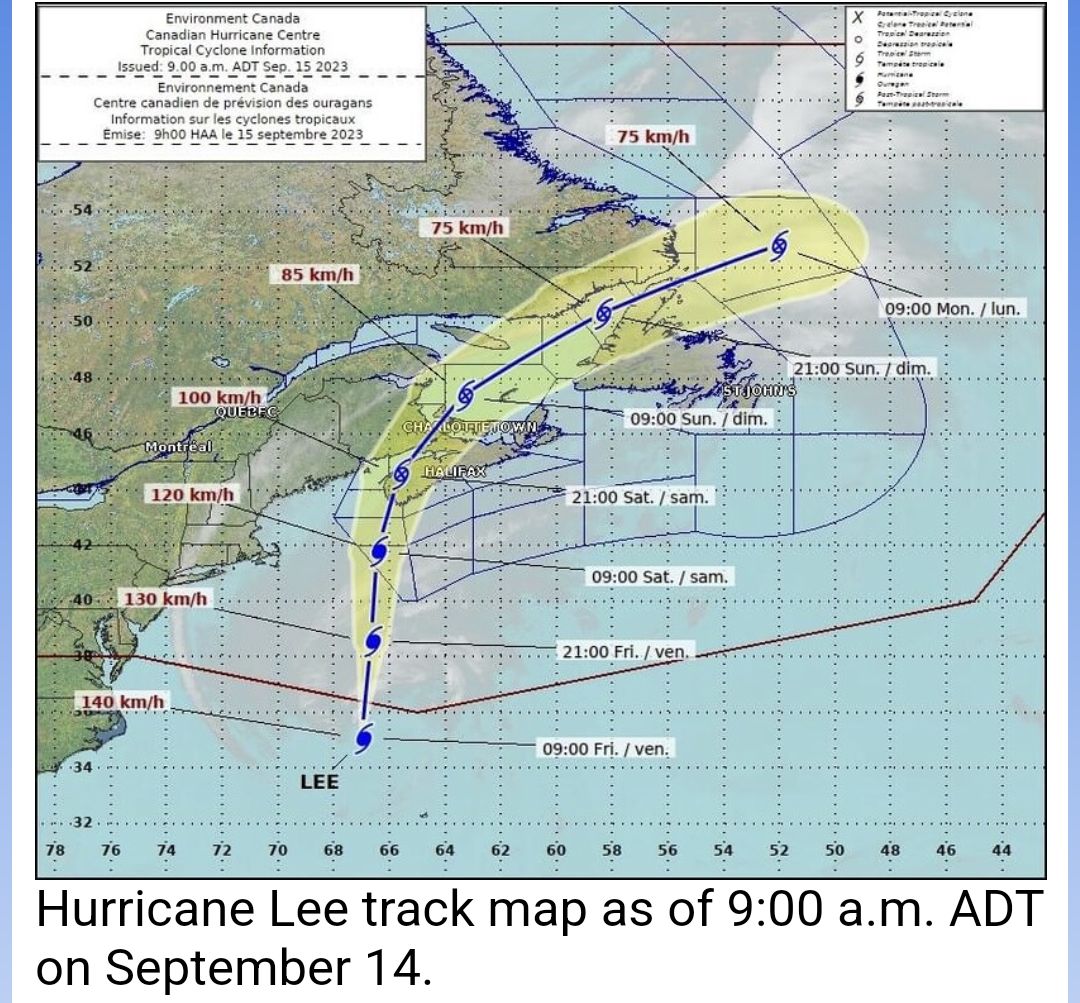**** Info via Environmental Canada
2023 Atlantic hurricane season
The 2023 Atlantic hurricane season came to an official end on November 30. This above-normal hurricane season was ranked fourth for the most named storms in a year since 1950, with a total of 20 named storms. Among these, seven developed into hurricanes, with three reaching major hurricane status (category 3, 4, or 5). An average hurricane season sees 14 named storms, seven hurricanes and three major hurricanes.

Climatological conditions
This year’s hurricane season was characterized by record-warm ocean temperatures in the Atlantic and a strong El Niño – two competing factors in the development of tropical cyclones. El Niño events typically produce unfavourable conditions in parts of the Atlantic basin and suppress tropical cyclone development, leading to fewer hurricanes than normal in the Atlantic during the peak of the hurricane season. However, this year, more named storms developed in the Atlantic basin than any El Niño influenced year in the modern record. This was due to the record-warm ocean temperatures in the Atlantic that acted as a counterforce to the typical suppressing impacts of El Niño.
Canadian hurricane season
Two storms made landfall in Atlantic Canada this year.

The first storm to hit Canada was a bit of an oddity as it began forming in mid-January off the northeastern coast of the United States. It made landfall in Nova Scotia early on January 17 as a weakening storm, subsequently transitioning into a post-tropical cyclone, before eventually dissipating over far eastern Quebec the following day. This storm was not named but was designated as Subtropical Storm One later in May by Forecasters with the U.S. National Hurricane Center.

Tropical Cyclone Lee was the second storm to make landfall. Lee was a rapidly intensifying storm that developed into the only Category 5 hurricane of the 2023 hurricane season, with sustained wind of 265 km/h and gusts up to 320 km/h. It made landfall as a post-tropical storm in western Nova Scotia on September 16, with maximum sustained winds around 110 km/h.
On top of strong winds, Lee brought coastal flooding and heavy rains to Atlantic Canada and caused widespread damage, including downed trees and power outages along the Atlantic coast of Nova Scotia.
.



